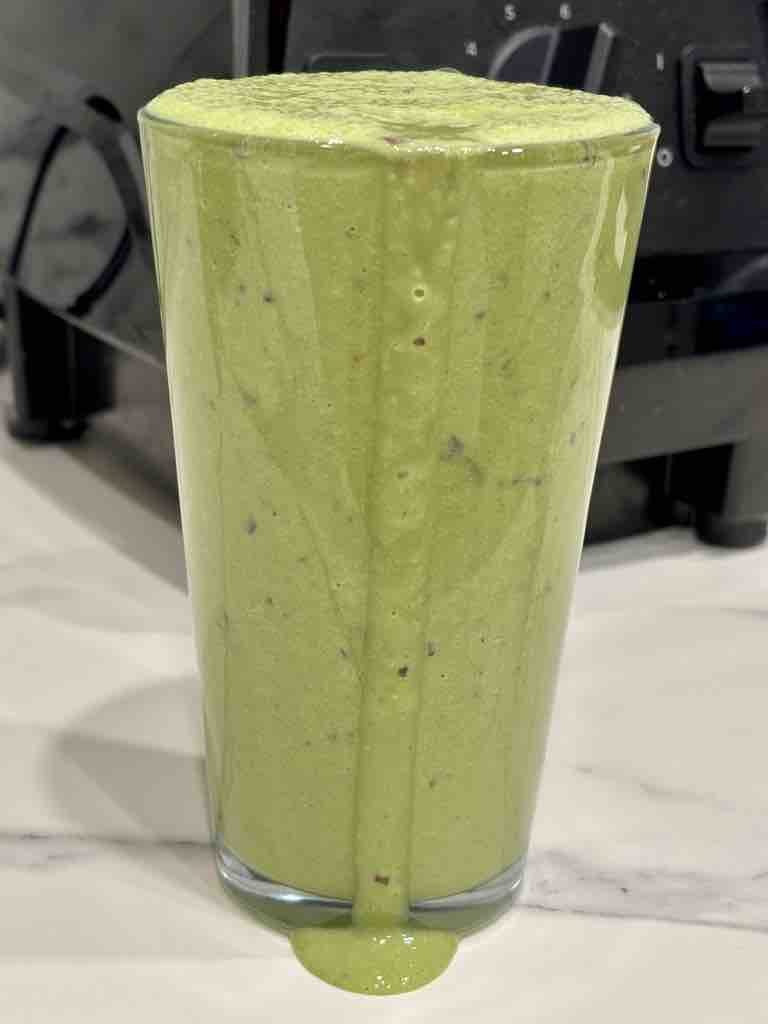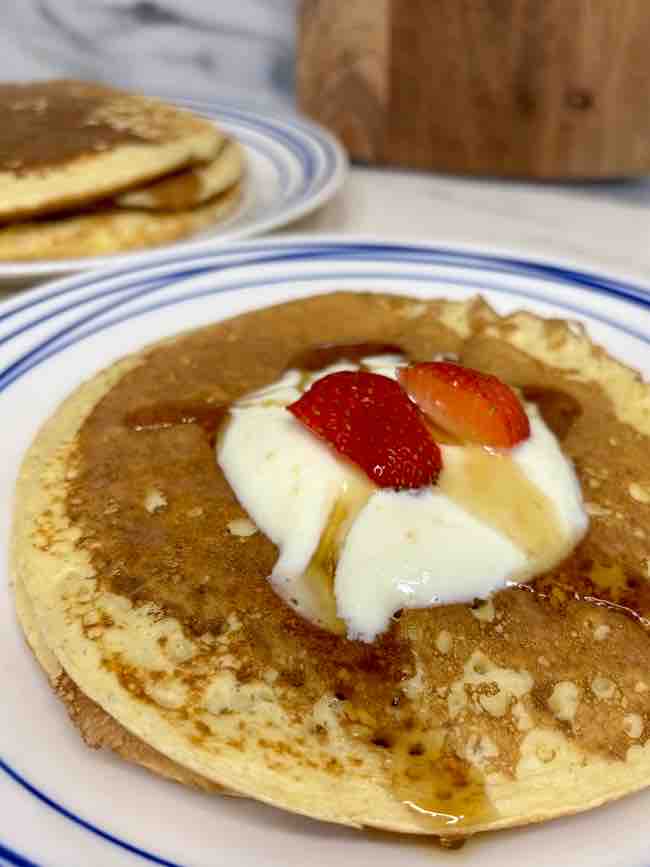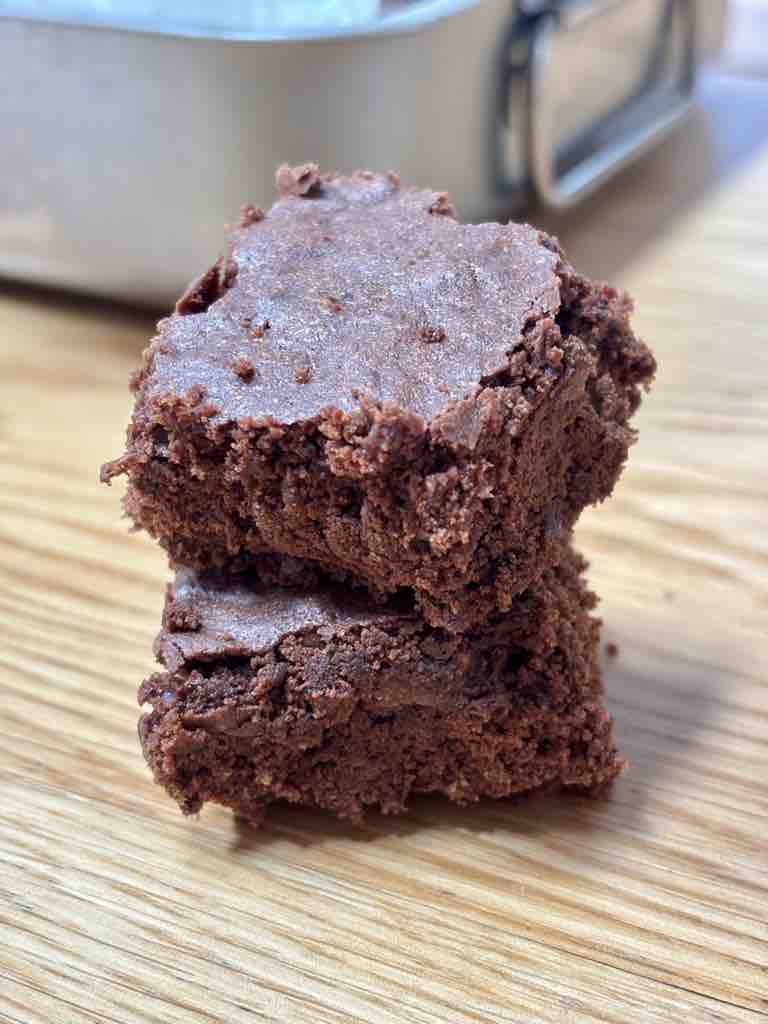Pink Sourdough Bread – The Perfect Valentine’s Loaf
If you’re anything like me, you’re always on the lookout for little ways to shake up your baking routine. Maybe you’re tired of the same old white bread, or you’ve got a little one who’s recently discovered the Barbie movie. Well, have I got a fun twist on your typical sourdough for you!
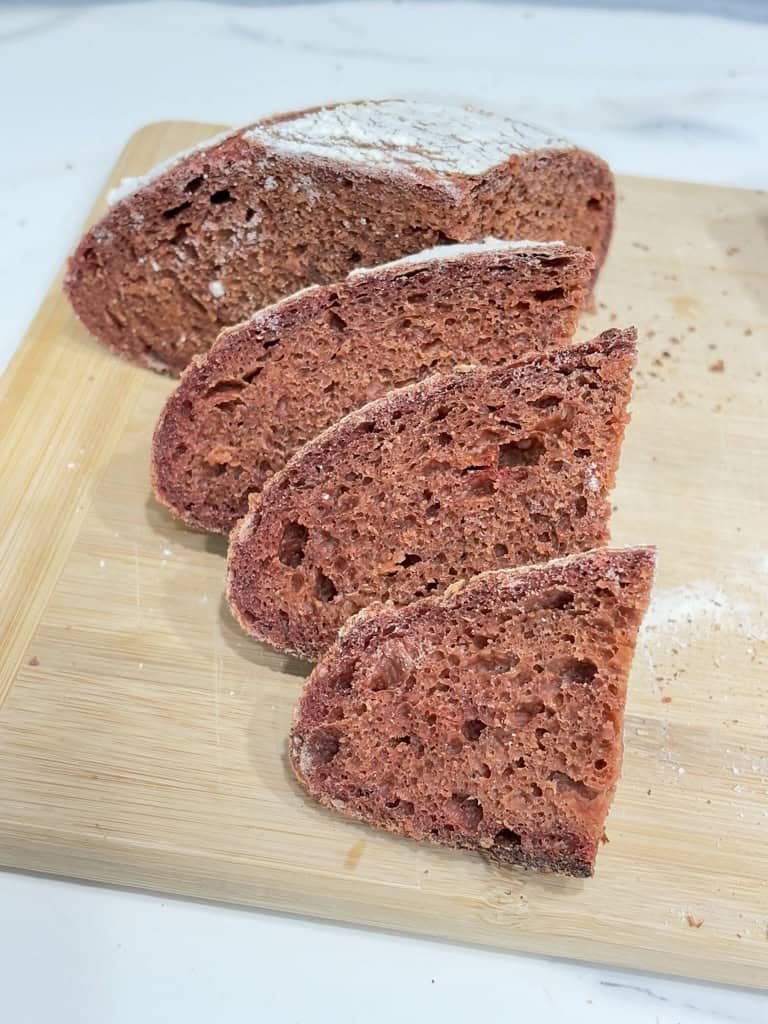
Imagine a warm, soft loaf of pink sourdough bread that’s not only beautiful but packed with health benefits too. Yes, you heard that right—pink sourdough bread! Not only does it look like something straight out of a fairy tale, but it’s also made with natural ingredients like beetroot powder, so you can feel good about what you’re feeding your family.
So, how did I get the idea for pink sourdough bread? Well, I have recently started to dehydrate my own foods and was experimenting with different ways to add a little beetroot to my dishes. Because of the earthy flavour, it doesn’t always work in sweet baking. So instead I thought, why not take something wholesome, like sourdough, and give it a vibrant twist?
I’d heard about using beetroot powder as a natural food colouring, and after a few attempts, I realized it’s the perfect way to turn your bread pink—without any of the artificial stuff. It’s such a fun way to make your standard foods a little more exciting. And such an easy way to spice up Valentine’s Day breakfast.
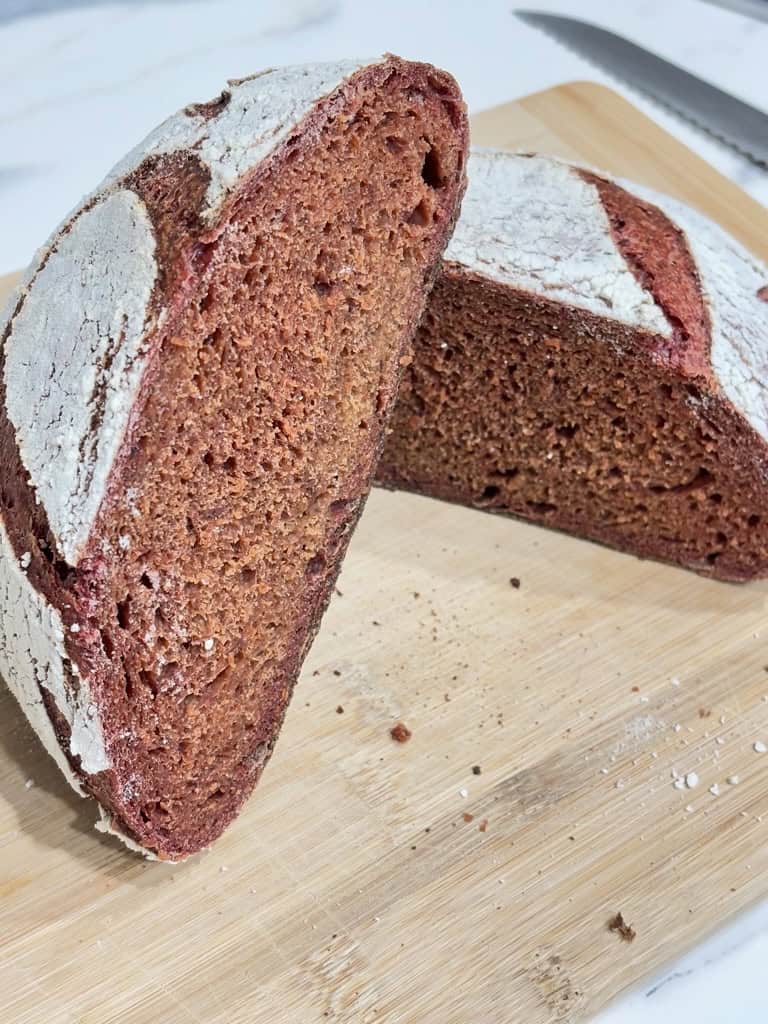
But before we get into the recipe, let’s talk about sourdough bread itself.
It’s been around for centuries as the original bread, since it’s made with wild yeast, aka sourdough starter. Not only is it tangy and chewy, but it’s also much easier to digest than regular bread. The long fermentation process breaks down gluten and phytic acid, making sourdough a better choice for many people with sensitive tummies.
It’s made a huge difference to my diet, as I really can’t stomach (pun intended) the poor quality loaves available in stores. So, when you make pink sourdough bread, you’re not just getting a fun loaf to look at, but a healthier, more nourishing option for your family.
And let’s be real—making sourdough bread at home can feel like a bit of a challenge at first, especially if you’re not familiar with the process. But trust me, once you get the hang of it, it’s totally worth it. The whole house will smell like heaven, and you’ll be so proud of your homemade loaf.
It’s such an awesome feeling for us home bakers to feed your family something wholesome and made with love. Ready to get baking? Let’s dive into how you can make your very own pink sourdough bread!
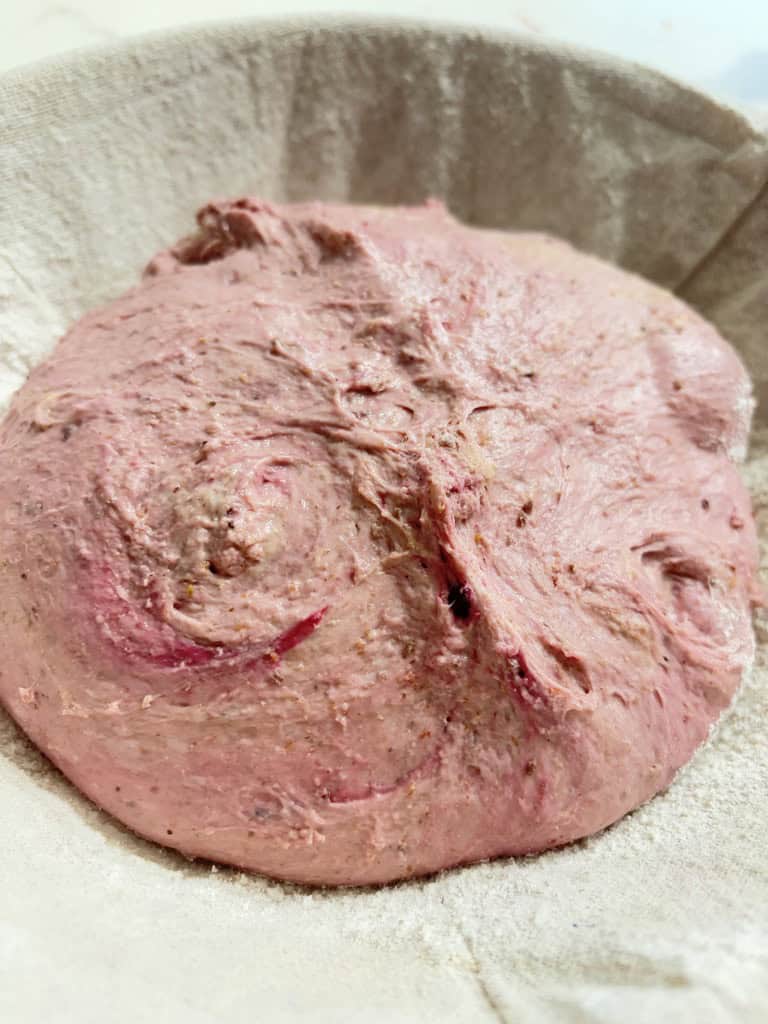
How to Make Your Sourdough Pink?
The trick to getting that lovely pink hue in your sourdough bread is simple: beetroot powder. Beet powder is made from dried and ground beets, and it’s a natural way to add vibrant colour to your bread without any weird additives or food colouring. When you mix beetroot powder into your sourdough dough, it’ll infuse the bread with a stunning pink tone that’s both eye-catching and totally natural.
But here’s the thing—while the beetroot powder adds colour, it won’t completely overpower the flavour of your sourdough. You’ll still get that tangy, slightly sour taste we all know and love, with a slight earthy undertone from the beetroot. It’s the perfect balance!
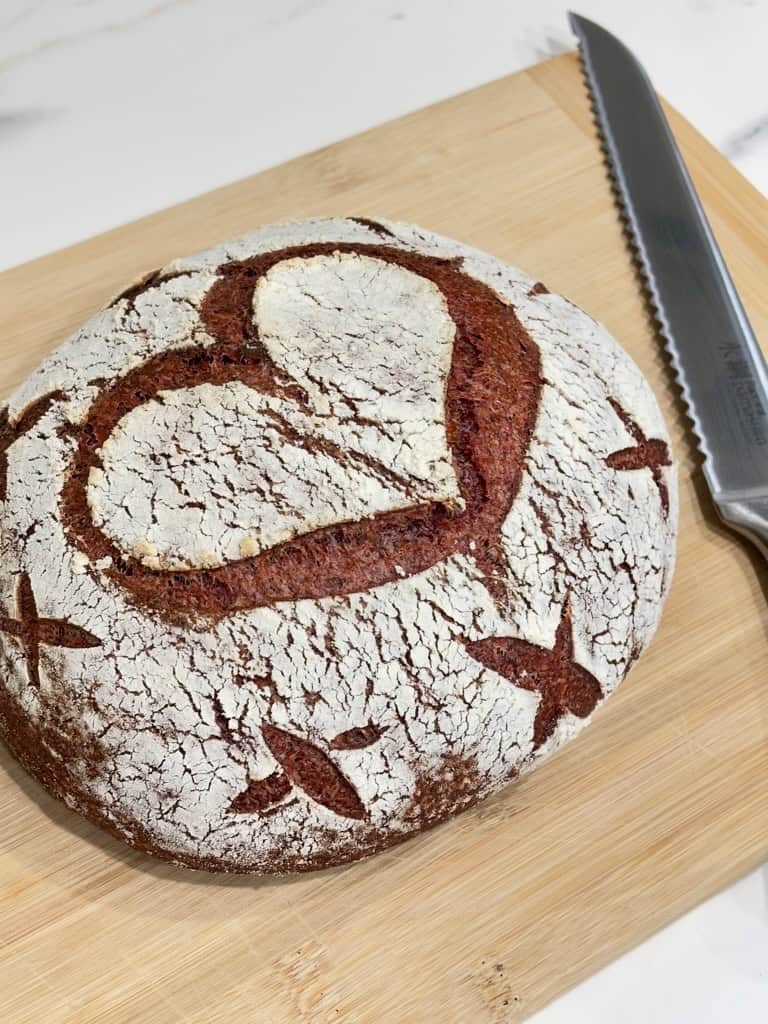
Why is Sourdough So Much Better for You?
So, what’s the deal with sourdough? Why is it a healthier option than regular bread? There are a few key reasons:
Natural Fermentation: The slow fermentation process in sourdough allows for beneficial bacteria (lactic acid bacteria) to grow, which are great for your digestive system. These probiotics help balance your gut, making sourdough easier on your tummy.
Lower Glycemic Index: Sourdough has a lower glycemic index compared to other breads. This means it won’t cause your blood sugar to spike as quickly. This makes it a great option for anyone trying to maintain stable energy levels throughout the day.
Rich in Nutrients: Sourdough geeks know that the fermentation process also breaks down phytic acid, which can inhibit the absorption of minerals like zinc and iron. That means your body can better absorb the nutrients from the flour.
Fewer Additives: Store-bought bread often contains preservatives, artificial flavours, and added sugars. Homemade sourdough, on the other hand, is a cleaner, more natural alternative using wild yeast.
So, when you make your pink sourdough bread at home, you’re not just adding a fun colour. You’re also giving your family a nutritious, gut-friendly loaf that’s both delicious and good for you.
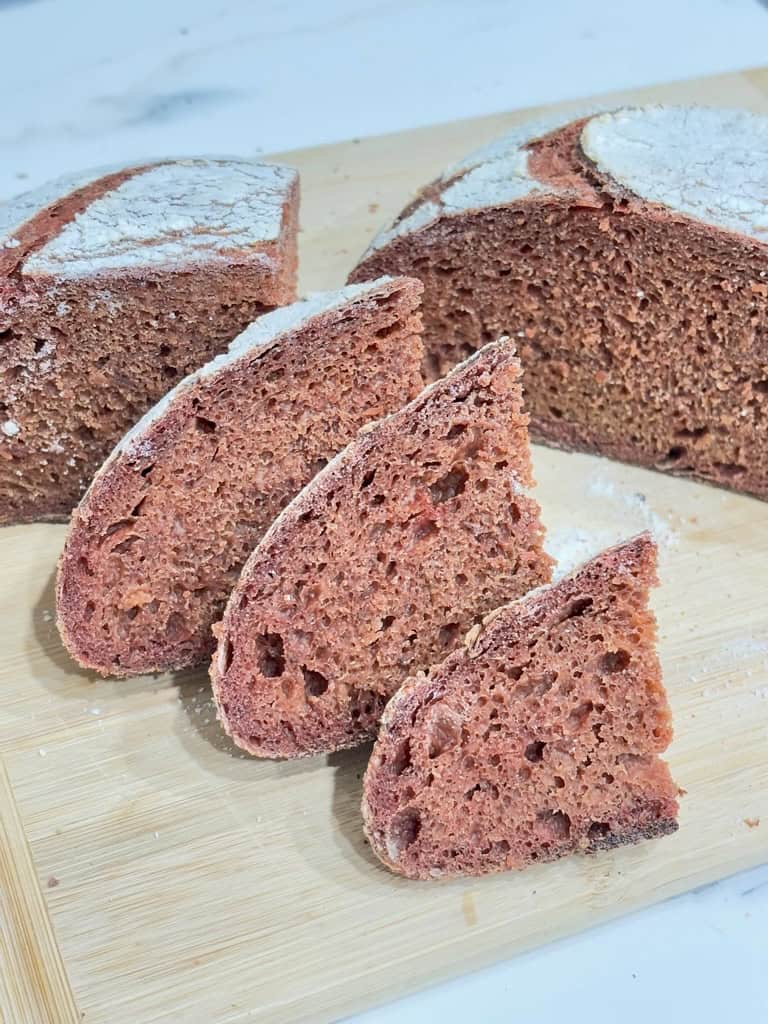
What Does Over-Fermented Sourdough Look Like?
Sourdough is all about patience, but sometimes we can get a little over confident and let it ferment too long. So, what does over-fermented sourdough look like?
Floppy Dough: If your dough is too loose and hard to shape, it might be a sign that it’s over-fermented. The dough can collapse easily, and you might end up with a loaf that spreads out rather than rising up in the oven.
Sour Smell: While sourdough has a naturally tangy smell, an overly sour smell can indicate that it’s gone too far. This can happen if the dough sits for too long without being baked.
Flat Loaf: An over-fermented dough won’t rise properly in the oven and may result in a dense, flat loaf instead of the airy, chewy texture you want. While these loafs are usually still fine to eat, you might want to turn them into croutons or breadcrumbs, rather than serving slices for breakfast.
Sourdough fermentation depends on so many different factors – your starter, your climate, time of year, fridge temperatures etc. As a rough guide, allow your loaf to ferment for at least 3-4 hours each step of the way. If you’re in a cooler climate, you could even extend this to about 6 hours each. Don’t worry though, with a little practice, you’ll be able to nail that perfect balance of fermentation time!
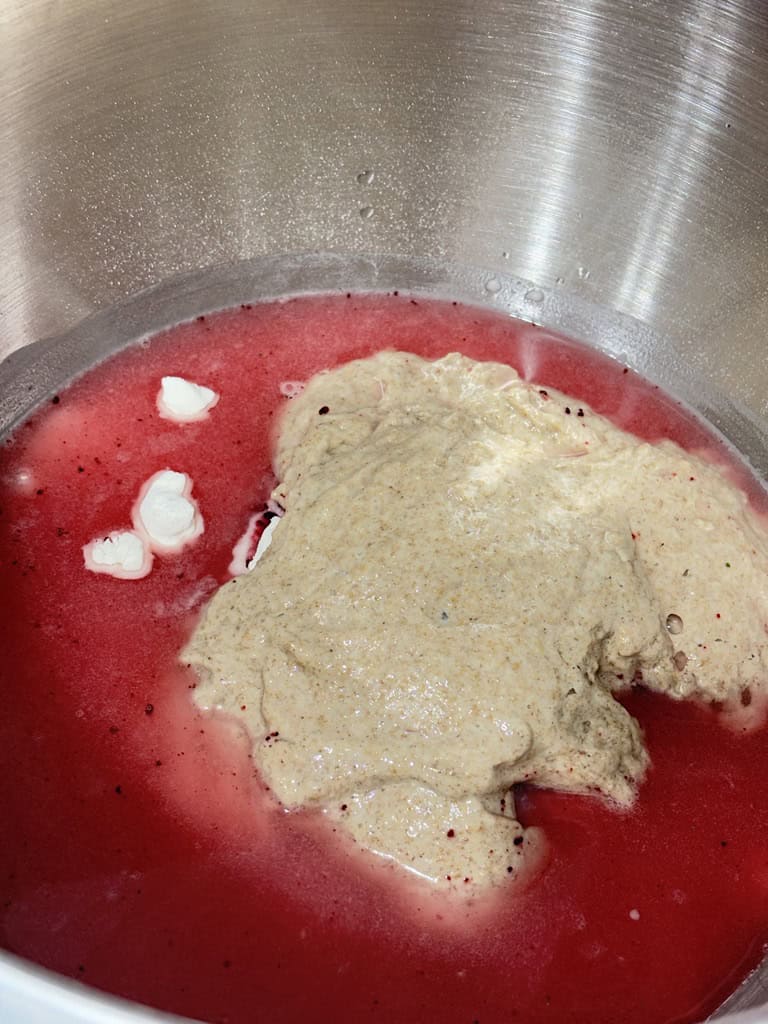
Ingredients
Flour: Use a strong white bread flour or mix all purpose flour with whole wheat flour like rye or spelt.
Sourdough starter: An obvious ingredient in homemade sourdough bread. Make sure to use active starter, so one that’s been fed a few hours prior and is now nice and bubbly.
Water: Use enough water to hydrate the flour and account for the beetroot powder to absorb some extra moisture. Using lukewarm water generally works best.
Beetroot powder: If this is your first time using beetroot powder, start with the recommended amount and see how you enjoy the taste. You can always add more next time to achieve a deeper colour in your sourdough artisan beetroot bread.
Salt: To season your bread.
How to Make Pink Sourdough Bread
Mix Dry Ingredients: In a large bowl, whisk together the flour, salt, and beetroot powder. The beetroot powder will give your dough that lovely pink tint as you mix it in.
Add Starter and Water: Stir in your active sourdough starter and gradually add the lukewarm water. You want to create a sticky dough, so don’t be afraid to get your hands in there!
Knead: Turn the dough onto a lightly floured surface and knead for about 10 minutes until it’s smooth and elastic. If the dough feels too sticky, you can add a little more flour. Just be careful not to add too much.
First Rise: Place the dough in a bowl and cover with a damp tea towel. Let it rise for 4-6 hours at room temperature. The dough should double in size and feel airy.
Shape the Dough: Once your dough has risen, gently punch it down to remove excess air. Shape it into a loaf and place it back into a bowl or a proofing basket.
Second Rise: Place the covered bowl into the fridge. Let the dough rise in the fridge for another 12-16 hours or overnight. In the morning, it should look puffy and soft.
Bake: Preheat your oven to 240°C (425°F) and place a dutch oven into it to pre-heat also. In the meantime, remove your loaf from the proofing basket and slice a pattern into the top layer. Place the loaf into the dutch oven. Add the lid and allow it to bake in the preheated oven for 25 minutes, then lift the lid off and allow it to bake for another 15 minutes.
Cool: Let your pink sourdough bread cool on a wire rack before slicing (if you can wait that long!). Serve with butter, cheese, jam or as a colourful side with your favourite bowl of soup.
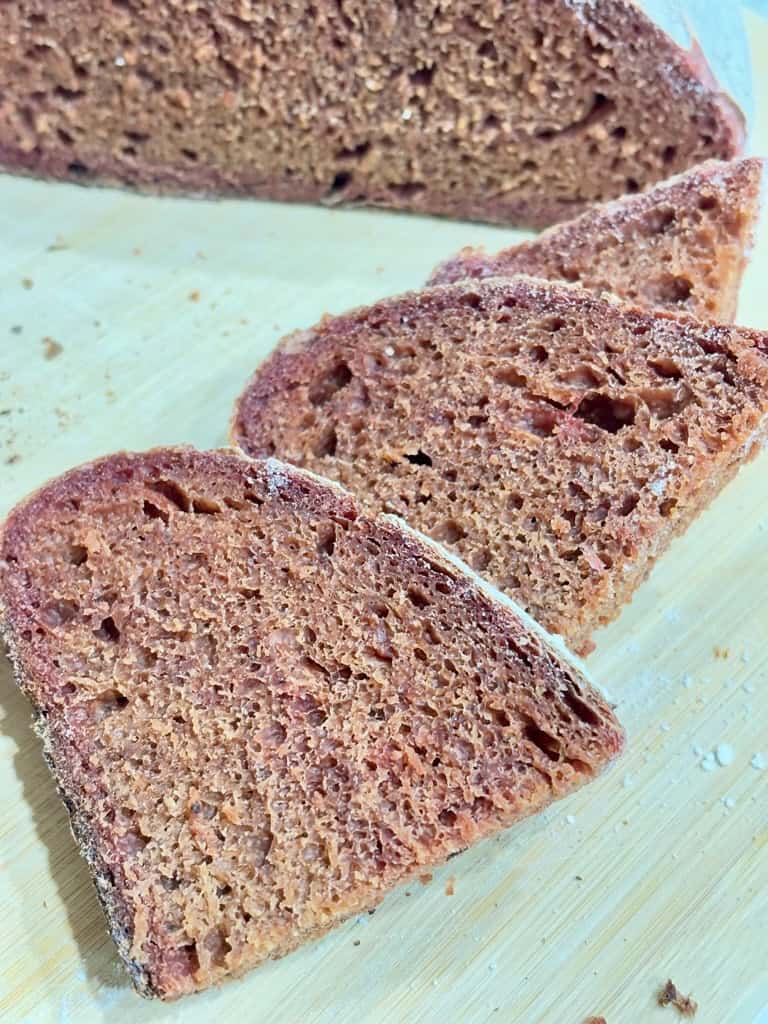
Why You’ll Love This Pink Sourdough Bread
This pink sourdough bread isn’t just a treat for the eyes—it’s also a real crowd-pleaser when it comes to taste. The earthy sweetness of the beetroot combined with the tangy sourdough flavour creates a unique, delicious loaf that will have your whole family asking for more. Plus, it’s a great conversation starter—just wait until you serve it at dinner or pack it in the kids’ lunchboxes!
Tips and Tricks
Beetroot powder can stain, so be sure to wash your hands and any utensils well after using it.
If you don’t have a sourdough starter, you can use store-bought yeast, though the flavour won’t be quite as rich.
Don’t rush the fermentation process. The longer you let your dough rise, the more flavour it’ll develop.
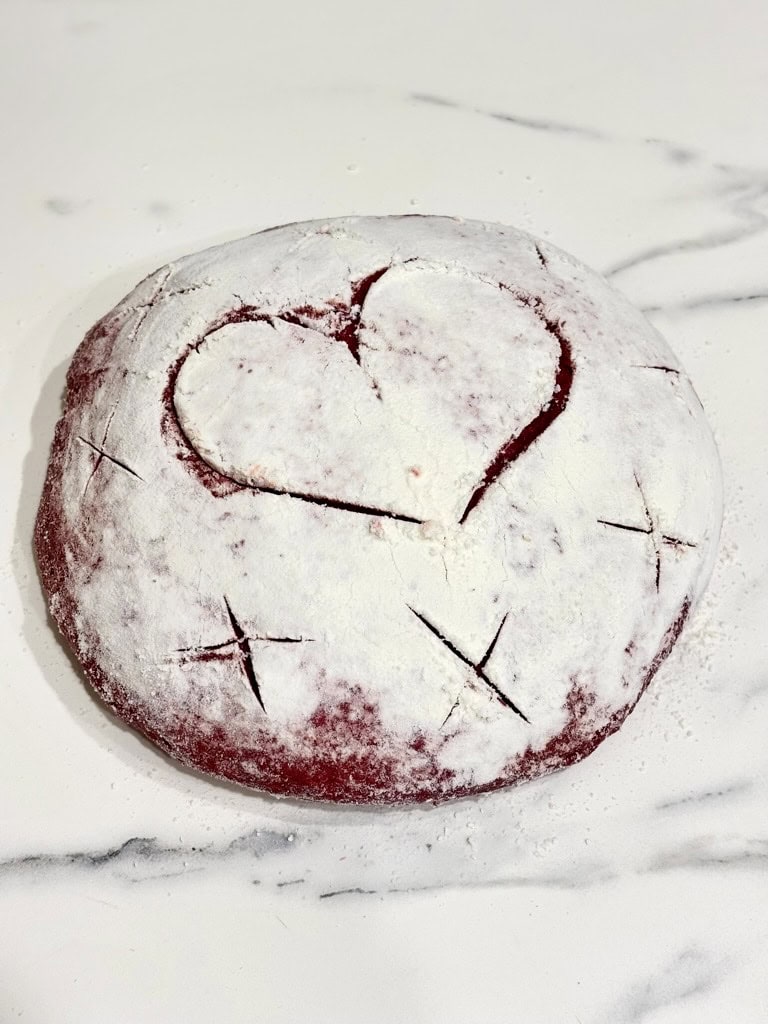
Easy Substitutes
If you don’t have beetroot powder, you can try beet puree to achieve the pink colour. Other natural powders like spirulina for a green loaf or turmeric for a yellow twist are other great options for coloured sourdough bread.
If you prefer a whole grain loaf, swap out some of the white flour for spelt flour or rye flour for added texture and nutrition. But be careful not to use more that 25% rye flour, as this will overpower and flatten your loaf.
I hope you give this recipe a try—it’s the perfect way to brighten up your kitchen and your family’s day! Happy baking!
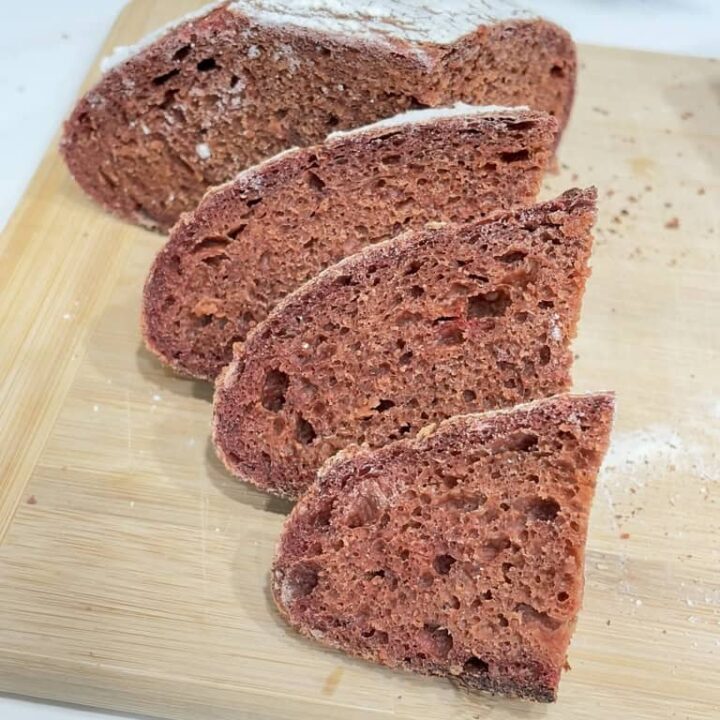
Pink Sourdough Bread
Beautiful and packed with health benefits.
Ingredients
- 400g Flour
- 260g Water
- 160g Active Sourdough Starter
- 10g Salt
- 1/4 cup Beetroot Powder
Instructions
- Mix Dry Ingredients: In a large bowl, whisk together the flour, salt, and beetroot powder. The beetroot powder will give your dough that lovely pink tint as you mix it in.
- Add Starter and Water: Stir in your active sourdough starter and gradually add the lukewarm water. You want to create a sticky dough, so don’t be afraid to get your hands in there!
- Knead: Turn the dough onto a lightly floured surface and knead for about 10 minutes until it’s smooth and elastic. If the dough feels too sticky, you can add a little more flour, but be careful not to add too much.
- First Rise: Place the dough in a bowl, cover with a damp tea towel, and let it rise for 4-6 hours at room temperature. The dough should double in size and feel airy.
- Shape the Dough: Once your dough has risen, gently punch it down to remove excess air. Shape it into a loaf and place it back into a bowl or a proofing basket.
- Second Rise: Place the covered bowl into the fridge. Let the dough rise in the fridge for another 12-16 hours or overnight. In the morning, it should look puffy and soft.
- Bake: Preheat your oven to 240°C (425°F) and place a dutch oven into it to pre-heat also. In the meantime, remove your loaf from the proofing basket and slice a pattern into the top layer. Place the loaf into the dutch oven. Add the lid and allow it to bake in the preheated oven for 25 minutes, then lift the lid off and allow it to bake for another 15 minutes.
- Cool: Let your pink sourdough bread cool on a wire rack before slicing (if you can wait that long!). Serve with butter, cheese, jam or as a colourful side with your favourite bowl of soup.
Notes
- Beetroot powder can stain, so be sure to wash your hands and any utensils well after using it.
- If you don’t have a sourdough starter, you can use store-bought yeast, though the flavour won’t be quite as rich.
- Don’t rush the fermentation process. The longer you let your dough rise, the more flavour it’ll develop.


